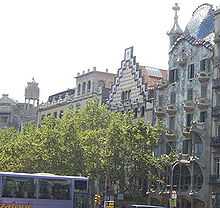Apple of Discord


An apple of discord is a reference to the Golden Apple of Discord (Greek: μῆλον τῆς Ἔριδος) on which, according to Greek mythology, the goddess Eris (Gr. Ἔρις, "Strife") inscribed "to the fairest" and tossed in the midst of the feast of the gods at the wedding of Peleus and Thetis, thus sparking a vanity-fueled dispute among Hera, Athena, and Aphrodite that eventually led to the Trojan War[1] (for the complete story, see The Judgement of Paris). Thus, "apple of discord" is used to signify the core, kernel, or crux of an argument, or a small matter that could lead to a bigger dispute.
Derivative uses
Because of this, the Roman goddess corresponding to the Greek Eris was named "Discordia". Also, in German and in Dutch, the words are used a lot more often colloquially than in English, though in German the colloquial form is not Apfel der Zwietracht (lit. "Apple of Discord") but Zankapfel ("Quarrel-apple") and rarely Erisapfel - the Dutch is Twistappel ("Strife-apple").
In the Eixample district of Barcelona, there is a block nicknamed in Spanish: La manzana de la discordia (Catalan: L'illa de la discòrdia), the reason for this usage is because manzana means both "apple" and "city block" in Spanish. It was so named ("block of discord") because it features three different interpretations of Modernisme architecture: Antoni Gaudí's Casa Batlló, Lluís Domènech i Montaner's Casa Lleó Morera, and Josep Puig i Cadafalch's Casa Amatller.
"To the Fairest"
The word ΤΗΙ ΚΑΛΛΙΣΤΗΙ (Ancient Greek: τῇ καλλίστῃ tē(i) kallistē(i), Modern Greek: τη καλλίστη ti kallisti; "for/to the most beautiful")[2] was inscribed on the Golden Apple of Discord by Eris. Καλλίστῃ is the dative singular of the feminine superlative of καλός, beautiful. In Latin sources, the word is formosissima.[3]
See also
- Golden apple
- Judgement of Paris
- Eris
References
| ||||||||||||||||||||||